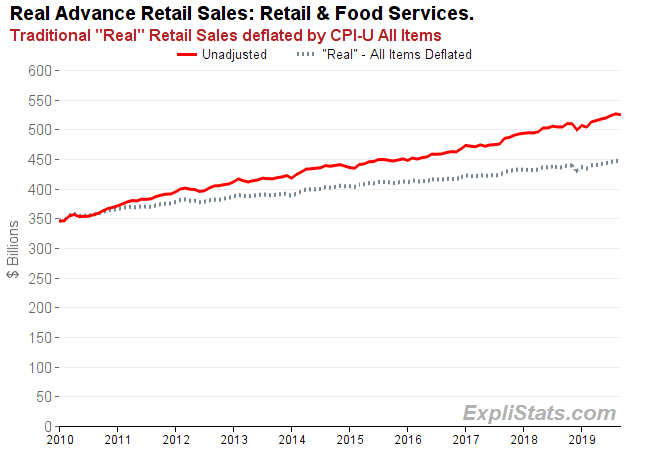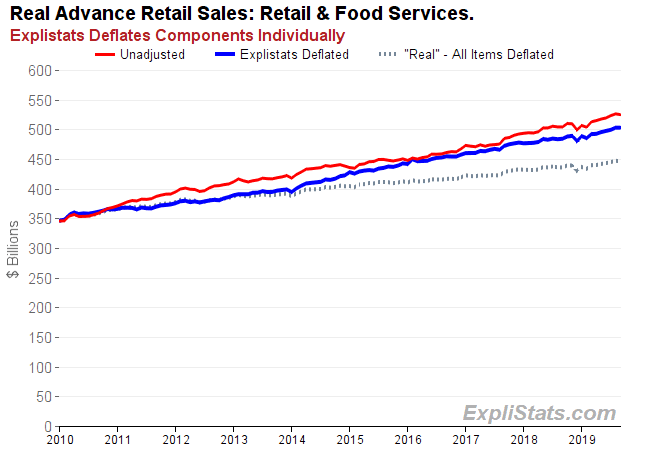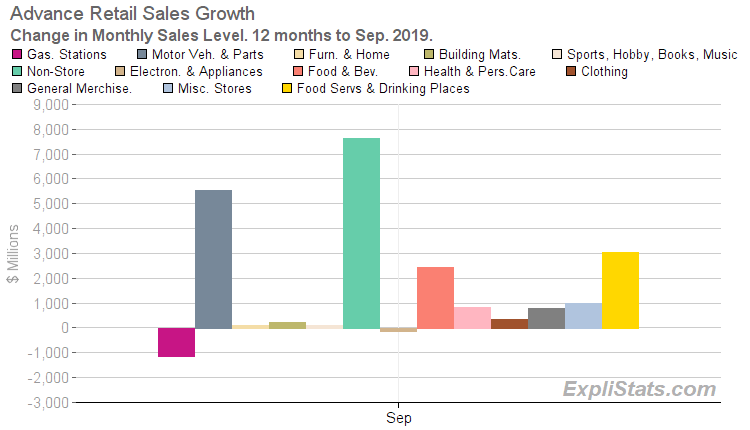ExpliStats has constructed an alternative to the traditional “Real” Retail Sales series, which, we believe, gives a much better picture of growth in price-adjusted sales quantities. Please ask for a copy of our data, which we intend to provide free, going forward.
The Census Department’s Advanced Retail Sales survey is often deflated by the CPI-U All Items Price Index to produce a “Real” Retails Sales (see St. Louis Fed.) This is done in order to strip out price changes to show the increase (or decrease) in the volume of goods and services sold.
Because prices tend to increase, this deflation produces a markedly slower growth in retails sales.

But, the use of the CPI-U All Items as the deflator, although convenient, is flawed.
There are two main flaws:
- The All Items index includes large, non-retail components such as housing, education and medical services. This means that we are deflating the basket of retail goods with a different basket of prices.
- Stripping out the non-retail items, we still find that the relative importance of the remaining items in the All Items index, do not match exactly the relative sizes of the various retail sectors to which they correspond.
To overcome these flaws, Explistats has taken each of the thirteen components of the total Retail & Food Services Sales, and has deflated each by a CPI-U price index more suited to that component’s sales.
For instance, Gasoline Stations are deflated by the CPI-U Motor Fuel index. Meanwhile, the Food Services & Drinking Places sector is deflated by the CPI-U Food Away From Home index.
What we then see, when we add those individually delfated sector sales together, is a rather different picture:

But, we think that the nub of the story is captured by the following chart which shows three top-level, CPI Price Indexes. “Stuff” (of which Retail Sales is mostly composed), as opposed to Services, has hardly risen in price. And commodities that do not include food or energy have dropped in price (according to the CPI).

As for more recent growth in retail sales, the next two charts compare the past year on year growth in sales by retail sector.


